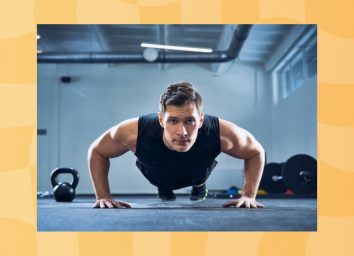9 Best Floor Exercises for Seniors To Improve Their Strength
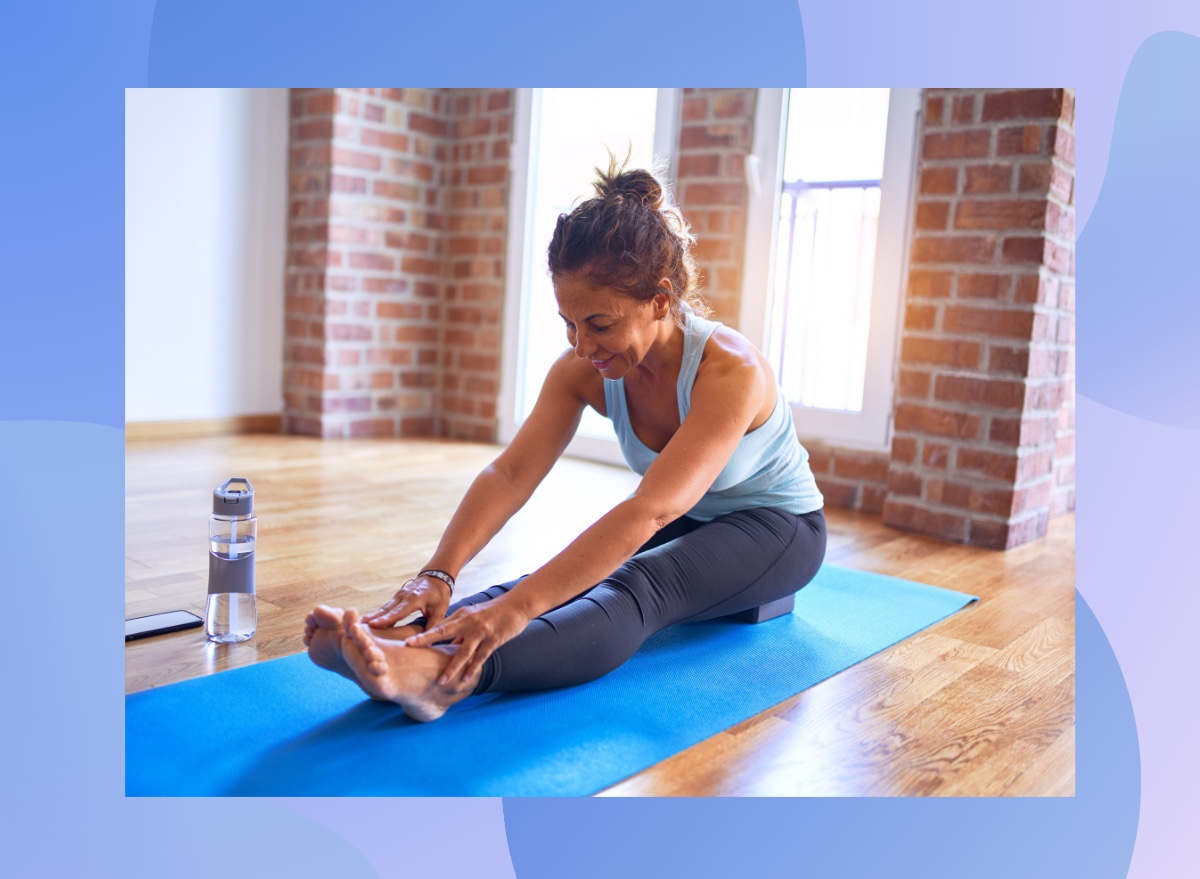
As you age, it's essential to take time to smell the roses and fully enjoy life. In order to do so, establishing a regular exercise routine is imperative to keep you strong and healthy. Research shows that muscle mass declines anywhere from 3% to 8% every 10 years after the age of 30; this rate speeds up after 60. So, if you want to smell the roses and be able to cut them, too, we've curated some of the best floor exercises for seniors to improve their strength and daily function.
The loss of muscle mass, function, and strength that inevitably comes with age is no joke. In fact, it's a main cause of disability among the older population because it makes aging adults more susceptible to falls and injuries. It can also greatly impair their independence
That's where floor exercises come in handy—specifically Pilates, which incorporates movements that mobilize, strengthen, and balance your entire body. "[Pilates] is a system of exercise that incorporates moving your spine in all directions, promotes core strengthening, [and] emphasizes good posture and alignment," explains Carissa Fernandez, master trainer for Club Pilates. "All bodies can benefit from an active Pilates practice, but Pilates is specifically very safe for the active aging community. Pilates exercises can be modified for any injuries and to protect the spine as it ages. It provides the benefits of muscle toning and flexibility through low-impact yet effective movements."
Below are some of the best Pilates floor exercises for seniors to improve their strength. All you need is an exercise mat and some good motivation to get started.
Flat Back Bridge
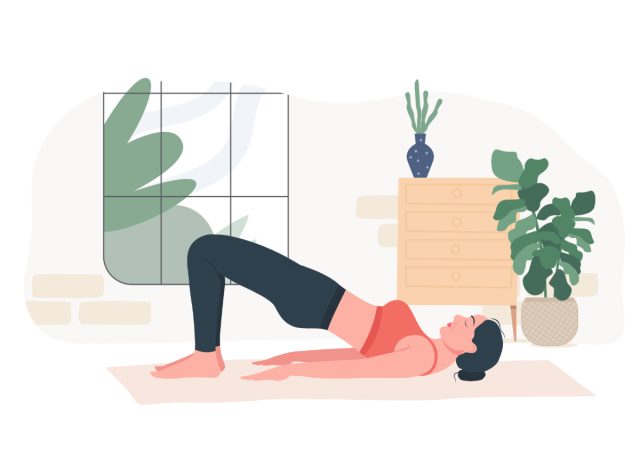
The flat back bridge is one of the best floor exercises for seniors to improve strength; it strengthens your spinal and posterior chain muscles. "[It's] safe for seniors who may have osteopenia or osteoporosis because it is a version of the bridge that does not include articulating or segmenting the spine," Fernandez says.
To get started, lie flat on your back with your feet placed hip-width apart. Keep your palms and feet pressed into the exercise mat as you lift your hips. Hold the bridge at the top, then lover. Do this exercise four more times, all while keeping your spine flat as you raise your hips up and down.
Toe Taps
"This exercise requires pelvic stability and strengthens your core without spinal flexion, which makes it a safe exercise for beginners or people with low back issues," says Fernandez.
Lie flat on the mat face-up, and walk your legs up one at a time to form a tabletop position. Keep your knees stacked over your hips, and raise your feet off the ground. Next, bend to your left side as you touch the floor with your toes. Activate your core so your lower back stays still. Do the same on the opposite side. Perform 10 reps per side.
Spine Stretch Forward
"This exercise is an example of spinal flexion and strengthens your core muscles while mobilizing your spine," Fernandez tells us. "It is a safe exercise for those with any spinal issues because it does not put loaded flexion on your spine."
Begin seated on the mat, lengthening your legs and stretching them out to the width of your mat. Flex your feet, and plant your heels on the ground. Stretch your arms out to shoulder height, exhale, and reach them toward your feet. Activate your core as you stretch out. Then, inhale as you stack your spine and sit tall. Repeat four more times.
Criss-cross
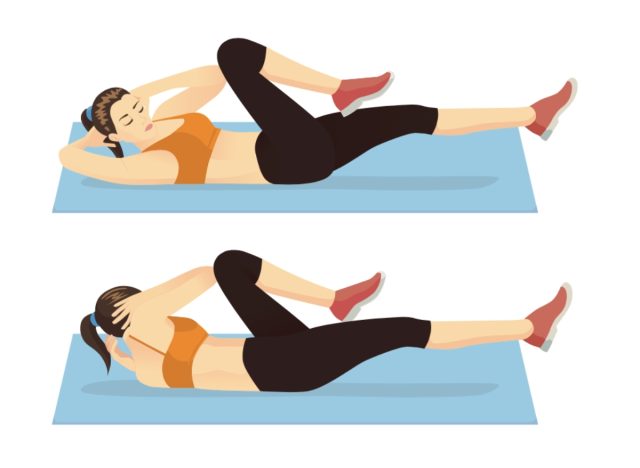
"This exercise is an example of spinal rotation and strengthens the obliques while stabilizing the pelvis," Fernandez tells us. "If spinal flexion or rotation is contraindicated for your spine, modify this exercise by keeping the head down and reaching your straight arm across your body, connecting the elbow to the outside of the opposite knee."
Start by lying supine on an exercise mat, raising both legs to form a tabletop position. Place your hands at the back of your head. Exhale and lift your neck, shoulders, and head off the ground while bringing your right elbow to your left knee. Return to the center before repeating on the other side. Continue to alternate, completing 10 reps on each side.
Side-lying Clam
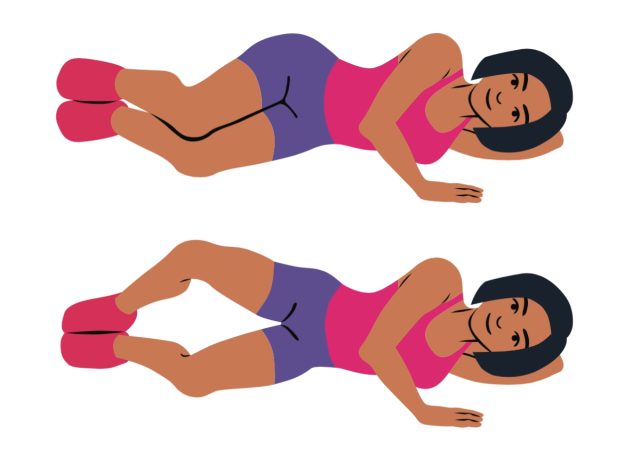
"This exercise strengthens the glutes and promotes core stabilization," says Fernandez.
Begin lying on your left side and bend both knees, bringing them up to your hips. Stack your heels on top of each other as you exhale, and you lift your top knee up toward the ceiling, mimicking a clamshell opening. Inhale as you bring it back down. Do this exercise nine more times before switching sides.
Mermaid
"This exercise is an example of lateral flexion and stretches the intercostal muscles, obliques, and spine," says Fernandez.
Begin seated on your left hip, keeping your right leg over your left, and both knees bent. Put your left hand on the floor just a few inches away from your left hip. Exhale as you stretch your right arm overhead and assume a side bend. Inhale, and sit back up tall. Do this exercise four more times before switching sides.
Swan
"This exercise is an example of spinal extension and helps to strengthen the posterior chain muscles and mobilize the spine," explains Fernandez. "If getting down on a mat does not work for your body, this exercise can be done standing, arms out in a goal post shape, hips over heels, while lifting the heart up toward the sky to provide gentle movement to the thoracic spine."
Lie down flat on your stomach, placing your feet hip-width apart. Keep the tops of your feet parallel and pressed into the ground. Position your hands below your shoulders, keeping your elbows bent and aligned with your shoulders. Press your palms and pubic bone into the floor as you lift your chest. Shift your gaze ahead of you. Then, exhale as you return down to the mat. Do this exercise four more times.
Bird Dog
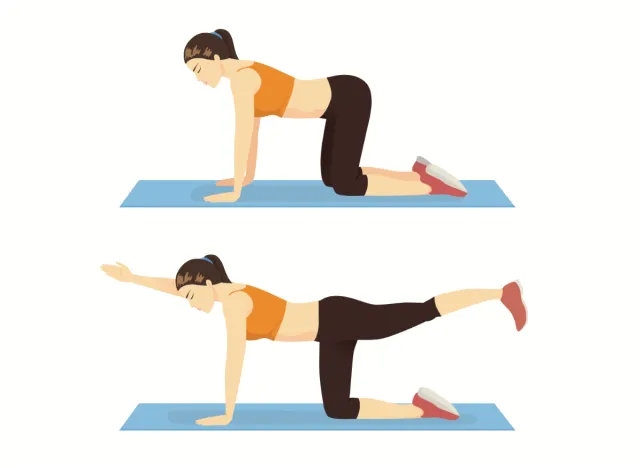
The bird dog is an ideal example of core control and spinal stabilization, and it's a stellar floor exercise for seniors to improve strength.
Begin in a quadruped position with your hands and knees on the floor. Make sure your shoulders are over your wrists and your hips are over your knees. Keep your abs activated and your spine stable as you start to raise your left arm off the floor and reach it out ahead of you. If you feel stable, extend your right leg, keeping it straight behind your hip. Hold the position for three breaths, then switch sides. Do this exercise four more times, two times per side.
Roll-down to Pushup
This is a two-for-one exercise. To wrap up this Pilates workout, begin standing tall at the back of your mat, planting your feet hip-width apart. "As you inhale, reach your arms up toward the sky; as you exhale, soften your knees and begin to roll down the length of your spine until your hands reach the mat," instructs Fernandez. "Begin to walk your hands away from your feet until you are in a plank shape, then bend your elbows back in line with your shoulders to do a pushup. Straighten your arms to press back to plank, then pike the hips up and begin to walk your hands back to your feet."
Feel free to modify the pushup portion by performing a knee pushup, or skip the pushup altogether and hold your plank for 15 seconds. As you roll back up, keep your knees soft to protect your back, and start to stack your spine tall as you breathe out. Do this exercise two more times to wrap up.
- Source: Muscle tissue changes with aging




